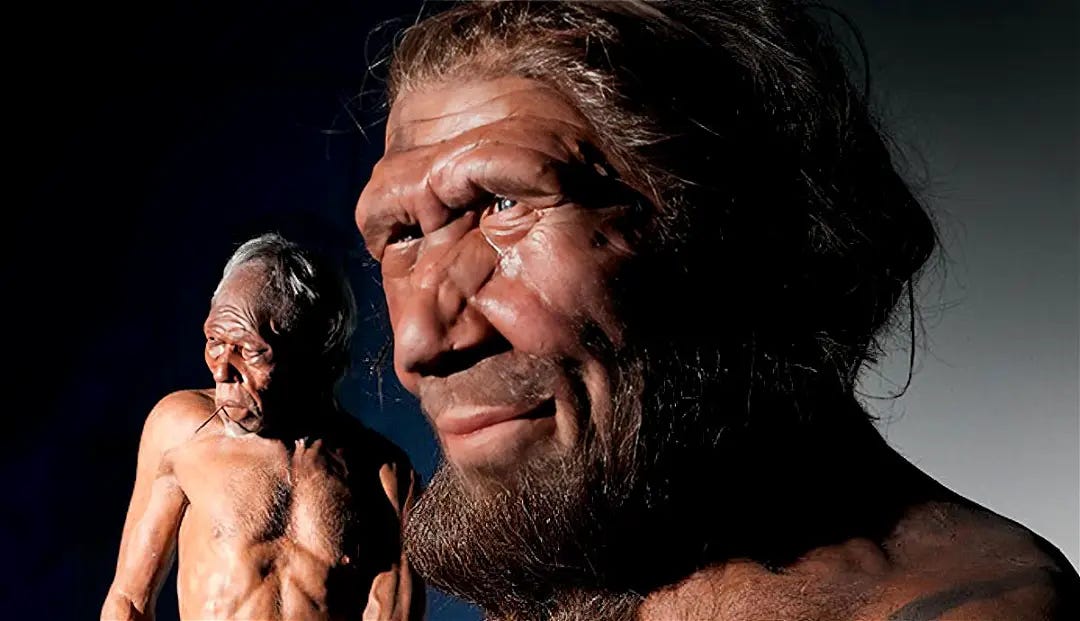Neanderthals and Modern Humans Interbred 47,000 Years Ago
Manage episode 425255345 series 3444207
Most people alive today carry traces of genes inherited from Neanderthals—the enduring legacy of prehistoric interactions with our extinct cousins. Researchers have long debated when and where these mingling events occurred and whether they were isolated incidents or commonplace. A recent not-yet-peer-reviewed analysis1 of ancient and modern genomes suggests that contemporary human Neanderthal DNA originated from a single, prolonged period of mixing approximately 47,000 years ago.
Introduction
A new study, recently released as a preprint on bioRxiv, sharpens the timeline for this crucial period in human history. This groundbreaking research leverages dozens of ancient Homo sapiens genomes to address long-standing questions about the origins of Neanderthal genes in modern humans. The findings also offer insights into the timing of other significant events in human evolution, such as the peopling of Australia.
Rajiv McCoy, a computational geneticist at Johns Hopkins University, remarks,
"It’s probably the most comprehensive picture we have to date of Neanderthal gene flow into modern human populations."
Historical Context
Divergence and Migration
Neanderthals and modern humans diverged around 500,000 years ago, with Neanderthals residing in Eurasia and modern humans (Homo sapiens) in Africa. Approximately 70,000 years ago, modern human groups left Africa and spread across Eurasia, likely encountering Neanderthals in the Middle East or Europe. Early encounters between the two species may date2 back 100,000 years or more, but much of the Neanderthal DNA from these early interactions has not survived in modern populations.
Methodology
Genetic Analysis
Priya Moorjani, a population geneticist at the University of California, Berkeley, led the research team in analyzing previously sequenced genomes from 59 ancient Homo sapiens, dating from 45,000 to 2,200 years ago. This included DNA from notable ancient individuals such as Ust’-Ishim man3 from western Siberia (45,000 years old), the Zlatý kůň woman4 from the Czech Republic (45,000 years old), and individuals from Bulgaria’s Bacho Kiro caves5 (35,000 to 45,000 years old) and Romania’s Peștera cu Oase caves6 (40,000 years old).
The researchers identified regions of Neanderthal DNA in these ancient genomes and in 275 present-day individuals from around the globe. They used computer software to track the evolution of Neanderthal genes over time across various populations, achieving a level of precision that previous studies based on contemporary genomes could not.
Findings
Timeline of Interbreeding
Moorjani and colleagues concluded that Neanderthal genes began flowing into the ancestors of people alive today about 47,000 years ago. Their modeling suggested that a period of gene flow lasting 6,000 to 7,000 years best fit the data.
Frequency of Interbreeding
The study did not specify how often Neanderthals and modern humans interbred during this period. However, Fernando Villanea, a population geneticist at the University of Colorado Boulder, noted that such pairings likely were not rare. For instance, ancient individuals from Oase and Bacho Kiro showed very recent Neanderthal ancestry, suggesting frequent interactions with Neanderthals, even if their lineages did not persist. Villanea says,
"Clearly, humans were running into Neanderthals all over the place. Maybe some of these early interactions were in populations that didn’t leave descendants, but then [about 47,000 years ago] there’s this main event. That makes a lot of sense."
Evolutionary Impact
Neanderthal DNA in Modern Humans
The oldest modern human genomes contained relatively long stretches of Neanderthal DNA. Over time, these segments became shorter, indicating that modern humans quickly eliminated some early Neanderthal DNA, possibly due to deleterious mutations or infertility. Despite this, several Neanderthal genes involved in skin pigmentation, immune response, and metabolism proved advantageous and persisted in modern populations.
Population Genetics
During the early gene flow period, approximately 5% of the interbreeding population's genes came from Neanderthals. This indicates that one in twenty individuals in this ancestral population was a Neanderthal.
Broader Implications
Migration and Human Evolution
The timing of these interbreeding events also helps pinpoint other major migration events. Chris Stringer, an anthropologist at the Natural History Museum in London, notes that the mixing occurred no earlier than 47,000 years ago, which aligns with the timeline for modern humans' arrival in Australia. This finding challenges some archaeological estimates suggesting earlier human presence in Australia, implying that earlier populations may have been replaced by later waves.
Conclusion
The study led by the University of California, Berkeley, provides a refined understanding of the interbreeding between Neanderthals and modern humans. This research not only elucidates a critical juncture in human evolutionary history but also highlights the enduring impact of these ancient interactions on modern human genetics.
Iasi, L. N. M., Chintalapati, M., Skov, L., Mesa, A. B., Hajdinjak, M., Peter, B. M., & Moorjani, P. (2024). Neandertal ancestry through time: Insights from genomes of ancient and present-day humans. In bioRxiv (p. 2024.05.13.593955). https://doi.org/10.1101/2024.05.13.593955
Kuhlwilm, M., Gronau, I., Hubisz, M. J., de Filippo, C., Prado-Martinez, J., Kircher, M., Fu, Q., Burbano, H. A., Lalueza-Fox, C., de la Rasilla, M., Rosas, A., Rudan, P., Brajkovic, D., Kucan, Ž., Gušic, I., Marques-Bonet, T., Andrés, A. M., Viola, B., Pääbo, S., … Castellano, S. (2016). Ancient gene flow from early modern humans into Eastern Neanderthals. Nature, 530(7591), 429–433. https://doi.org/10.1038/nature16544
Gibbons, A. (2014). Oldest Homo sapiens Genome Pinpoints Neandertal Input. Science (New York, N.Y.), 343(6178), 1417–1417. https://doi.org/10.1126/science.343.6178.1417
Gibbons, A. (2021). When modern humans met Neanderthals. Science (New York, N.Y.), 372(6538), 115–116. https://doi.org/10.1126/science.372.6538.115
Gibbons, A. (2020). Oldest Homo sapiens bones found in Europe. Science (New York, N.Y.), 368(6492), 697–697. https://doi.org/10.1126/science.368.6492.697
Gibbons, A. (2015). Ancient DNA pinpoints Paleolithic liaison in Europe. Science (New York, N.Y.), 348(6237), 847–847. https://doi.org/10.1126/science.348.6237.847
8 epizódok





